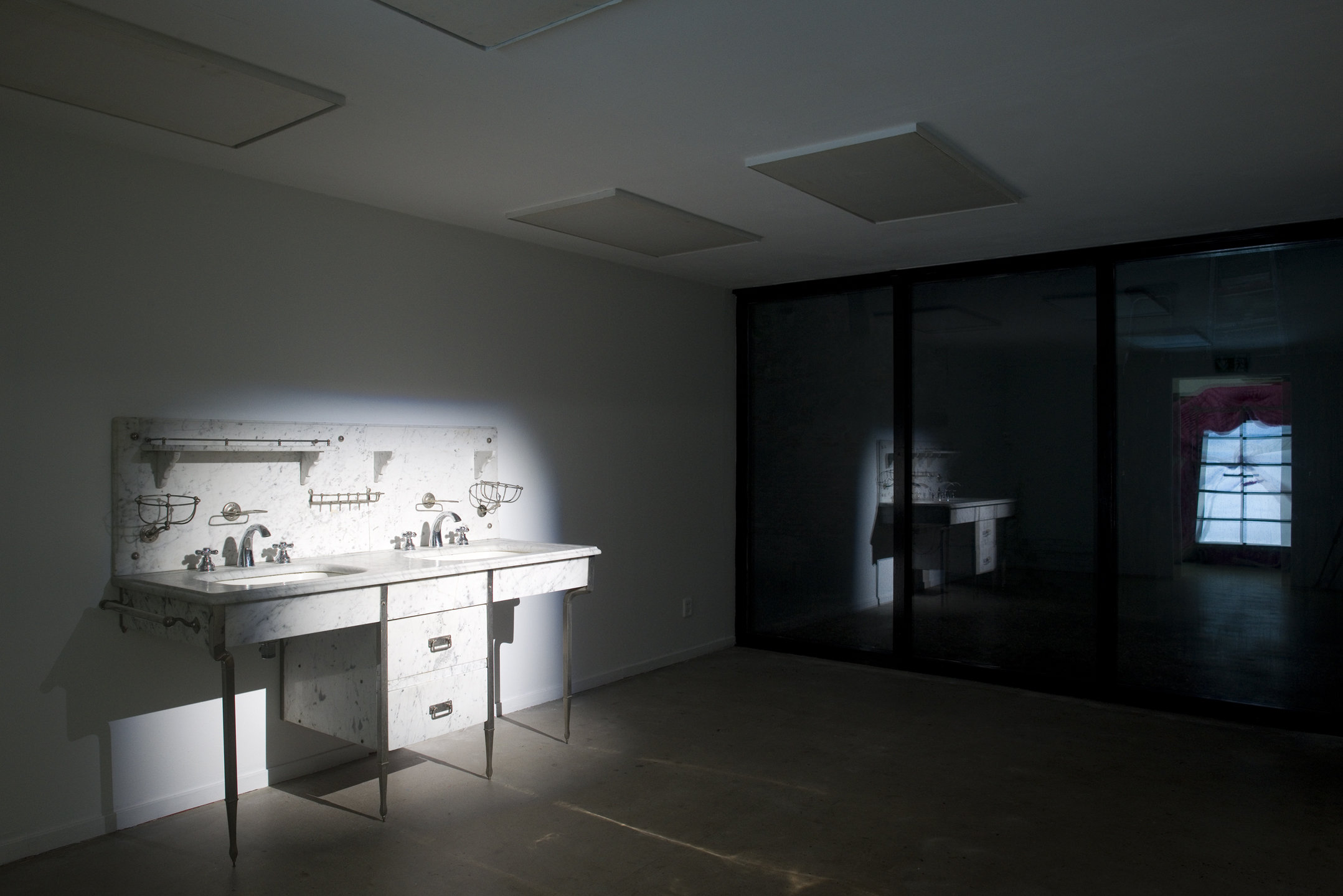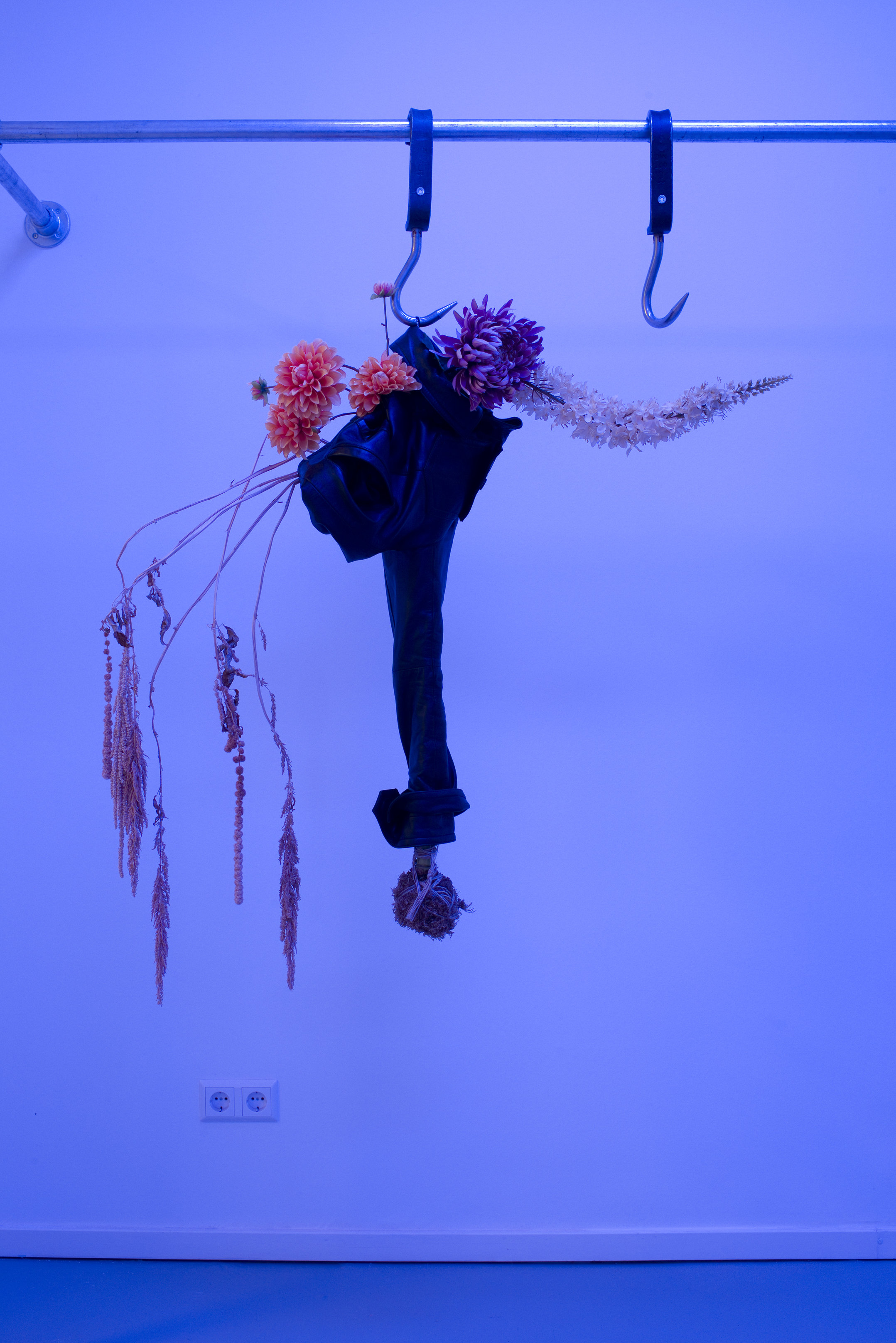Baha Görkem Yalım Mulch Sleep
1646
11 November 2023 - 7 January 202405-01-2024
Look, with my increased (now bordering on incessant) use of Instagram, it was only a matter of time before I would come across a quote on someone’s story about art writing. I don’t remember exactly who said what (sorry), but I believe it was a screenshot of a quote? From an editor? From a well-known art publication? It went something like: “An exhibition review should be as descriptive as possible because it is a document in time,” and that “the writer should leave their fancy interpretations out of it and work to serve solely this time-document whose sole purpose is to serve those readers unfortunate enough to have not witnessed the work in real life.” That was the gist of it anyway.
So, naturally, as things go, I saw said story at no other time than the eve of writing about Baha Görkem Yalım’s solo exhibition “Mulch Sleep” at 1646 in the Hague, and it thrust me into a mini panic attack. This Instagram story was telling me the opposite of what I was planning to do. A document in time? What about photographs? What happened to the iconic duo of a press release and exhibition documentation? In the gallery text for “Mulch Sleep,” as well as in a review in another publication, it was mentioned that this exhibition should be considered (or more accurately conceived) like a literary novel. What is meant by this? That the exhibition not only wants to impose a (rather obscure) narrative, but it also accrues meaning as it moves forward chronologically? That the exhibition has a beginning, a middle, an end? Characters? Are novels usually this shrouded in mystique and fey beauty? Instead of a viewer, should I consider myself a reader, a hieroglyphist? In short, is the novel comparison for “Mulch Sleep” accurate or sufficient? I hesitate to say.

I feel like it's almost always fruitless to compare words to images; to want or need to underscore the inability of words to do what images can, and vice versa. I should know: I have spent a better part of the last decade trying to add up the apples and oranges of text and image. Even when I reject this type of literary comparison, my mind alternatively goes to staging, scenography and other text-and time-related aspects embedded in the lexicon of theater, or theatricality. Which, not always but mostly, involves words. I don’t know if this is a hot take, but the novel, much like its cousin, cinema, is a time-based media. Meaning that there’s only one way to experience it, at least the first time around, and that’s from beginning to end. However, the way that “Mulch Sleep” is constructed, with a totality and with the intention of its different “chapters” relating to each other, also implies that its different works keep constantly reformulating their relations. I think in art exhibitions there is a cumulative force of relations — works make sense as a whole by way of their togetherness, they are considered a group by the artist and therefore belong together enough to be united under the same exhibition title. I have never looked at a group of works in the order that they appear in an exhibition, instead I almost always deliberately walk diagonally across a room and zigzag my way through the show. But hear me out, I had another thought. “Mulch Sleep” is like perfume, made with an expertise in scent-making that can only be approached by someone with a knack for engineering, or maybe architecture. And you know, ex-architects make great perfumes (ask me about it if you see me).
As bodies in space, as subjects sewn into time, in sober life at least, we never get to escape the linearity of our lived experience. But I have previously smelled perfumes (not many) in which the top notes — those olfactory elements that should (or can only) precede the mid and base notes — suddenly, unabashedly returned. Just imagine for a second how difficult it is to bring a perfume note back from the dead. In my opinion, “Mulch Sleep” is not a novel; it is a complex bouquet of flowers that rearranges itself in front of you as you experience it and then later again as you try to recall it.
In hindsight, this exhibition was also all about waiting. Chairs, benches, tables, coat hangers, blankets, night lights. These are different surfaces on or under which we change, and we age as we wait for the next act: altered, re-made, re-presented. Waiting, waiting, sleeping, sitting, sprouting. It seemed not entirely unapt for me to attempt to recall these elements in my mind, rather than to look at images and describe them.

Each of the exhibition’s four gallery spaces resemble a domestic or a public locale: a foyer, a dining room, a bathroom, another more carnal-seeming waiting room (just look at the photographs, they're very... erotic). A more liminal fifth space features an equipment cage with a video of a gymnasium inside. (When I was a young and disinterested student in PE class, the grotesque number of basketballs stacked and piled in these cages carried the dread and burden of maybe, possibly hoping to score a single basket). The potential is sometimes too much to bear, and not always positive. In separate galleries, Yalım also creates a kind of cyclical staccato of illumination: dark, light, dark, light and dark again. In the first gallery there’s artificial light—which shines from wall lamps protruding into the space, fitted with animal-shaped children’s toys — that barely illuminates three folded-steel benches. Secured to the backrest of each bench are poster-sized digital paintings of what looked like domestic scenes (I want to say “kitchen sink drama”, or some scene from some marriage), with fluid, humanlike figures melting disturbingly into one another. These paintings look like wet ink bleeding through paper, but also like certain DeepDream images, where one finds it hard to decipher what exactly one sees.
It’s hard (and maybe even unnecessary) to locate a centerpiece in the exhibition because the center shifts, the notes appear, disappear, reappear. But if I have to (and I don’t), let me talk for a bit about the visually imposing, blindingly pink stack of satin blankets — not unfamiliar to my Turkish eyes — in the exhibition’s main gallery. Where I’m from — where the artist is from — these blankets, alongside lacework and other pretty things, are part of making a trousseau (also called a “hope chest”), a tradition that is still alive. Etymologically, the trousseau is a bundle, from French. The making of a hope chest contains within it the futurity implied in its name. Once again, waiting, hoping. The sculpture is an imposing totem in a large, skylit room, situated at the end of the main exhibition space, blocking a passageway that leads to a smaller back room, through which the visitors can access a pebble garden and the other building where the exhibition continues. If I know my Turkish satin blankets, I would say this stack is crushingly heavy. Not sure why, but the moment I saw it I sensed, like the The Princess and the Pea, that there would be something smaller, impacted by its weight. Behind it, a large screen played a video of an earwig giving its last breath as it twitches, and watching it do so is deeply uncomfortable. I could only wait for a short while for it to redeem itself of its parasitic life, and it didn’t. (At a different time, perhaps, I would have waited longer for it, chewing pink gum with my mouth half-open until it lost its taste; sticking it on a table; chewing another one; putting it on top of the previous gum, making a wet stack of pink bubble gums; again, this sculpture.)
In another space six highchairs, like that of a tennis umpire’s. The chairs all face the wall, with a vista of nothing but the purplish wall illuminated by some sort of blacklight. Behind them, there is a metal structure, a coat hanger of sorts, from which two jackets hang on butchers’ hooks, and from whose sleeves and collars grow flowers, fresh and dried, and tall grass. Then somewhere around this point, it hit me: language is the driving force of the exhibition, sure, but inversely, through the shameless lack of it. Progressing through the space, every new set of work shifts the meaning of the set of works that comes before or after, creating an ineffable stack. So is Yalım a novelist or a necromancer, conjuring at will the past and the future? Perhaps, it’s my inability to capture the work in writing, but “Mulch Sleep” is so successfully evasive. I didn’t get to write about all the works; perhaps because I couldn’t: the Schubert piano pieces ringing through invisible speakers, permeating each gallery space like fog, the 1920s marble bathroom sink with sage burning in it, the hammered metal tables reflected in space like the Queen of Hearts with sweet potatoes growing out of their legs. But description alone is ephemeral; and why should I have to attempt an ekphrastic account of an exhibition that’s intended to escape language? What else could I tell you anyway but to try to bring back from the odd fugitive dream of “Mulch Sleep” and what’s simply been imparted to me by it? If it was a novel I could probably write about it better, but instead it’s oblique and beautiful, messy but subtle, like a yelp in the dark, or a drunken memory.